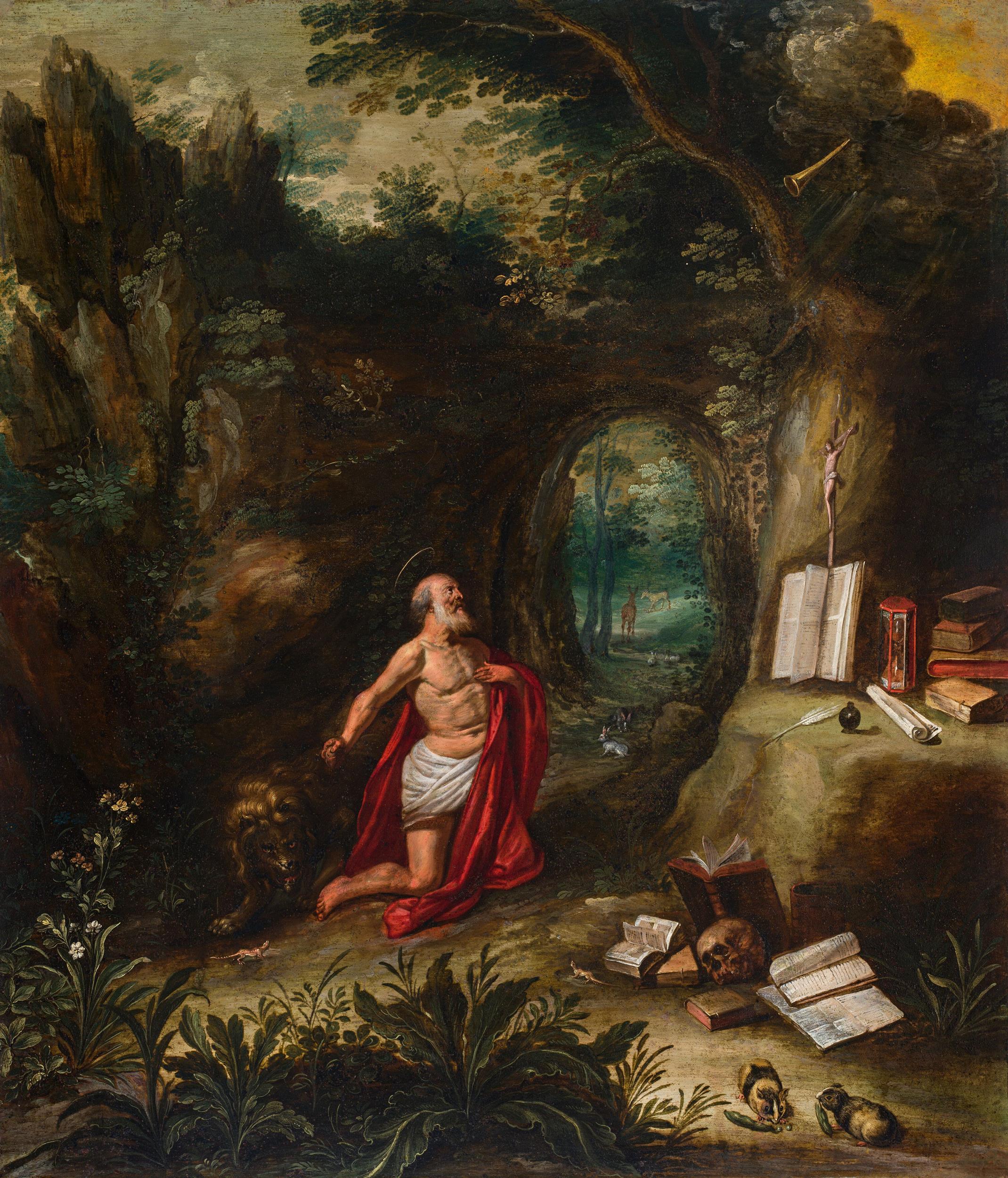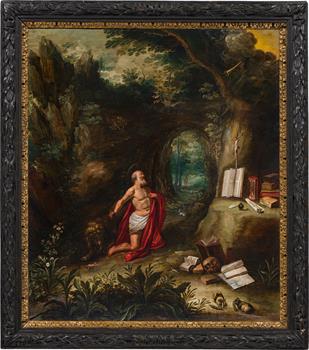1016
„Grotto landscape with Saint Jerome“
c. 1640
oil on copper; framed
75.4 x 61 cm
Provenance
private property, Austria
Certificate by Dr. Klaus Ertz, Lingen, 30 October 2015, is enclosed.
Estimate: € 35.000 - 70.000
Auction is closed.
The traditional attributes, such as the skull as a vanitas symbol or the books and writing utensils identify the sitter as the hermit Jerome. The tame lion assigned to the saint as an attribute looks menacingly at the viewer from the darkness of the wilderness. A trombone appears from a band of clouds as an ominous harbinger of the Last Judgement. The dramatic play of light and dark further emphasises the ascetic's ominous vision.
Although an outdoor setting was chosen, the framing or arching branches and rock formations appear like a small open-air chapel. The protrusions of the grotto also suggest a small altar or a writing room, where the most important utensils of Jerome, considered one of the Church Fathers, are presented. The attentive viewer will not miss the charming details in the landscape: on the right, two guinea pigs are gleefully eating pea pods, lizards are curiously observing the action and, in the background, rabbits and deer are grazing.
The landscape as well as the flowers and animals are by Jan Brueghel the Younger, while the figure was created by Abraham Willemsen. Collaboration with a fellow painter is common in the oeuvre of the Brueghel family and documented in numerous paintings; for example: "Paradise Landscape with Fall of Man" (oil on copper, 53 x 69 cm; private collection) by Jan Brueghel the Younger and Abraham Willemsen, "St. Mary Magdalene" (oil on wood, 46.7 x 66.4 cm; Royal Museum of Fine Arts, Brussels, Inv. No. 7693) as a work by Brueghel the Younger and Hendrik van Balen, as well as the joint work "Waterfall in a Rock Cave" (oil on canvas, 71.1 x 77.8 cm; Whitworth Art Gallery, Inv. No. 09 1963) by Brueghel the Younger and Josse de Momper the Younger.
Due to the painterly, almost two-dimensional brushwork of Jan Brueghel the Younger, the present painting can be assigned to the period around 1640: "Only from the mid-1630s onwards did he develop his own style of painting, which differs from his father's mainly in the colourfulness of the brushwork, which is somewhat restrained, and in the picturesque and spirited brushstrokes, which are not to be found in his father's work. All these painterly differences can be found in the ... painting, which suggests a late work of the two painters" (cf. certificate Dr. Klaus Ertz).


